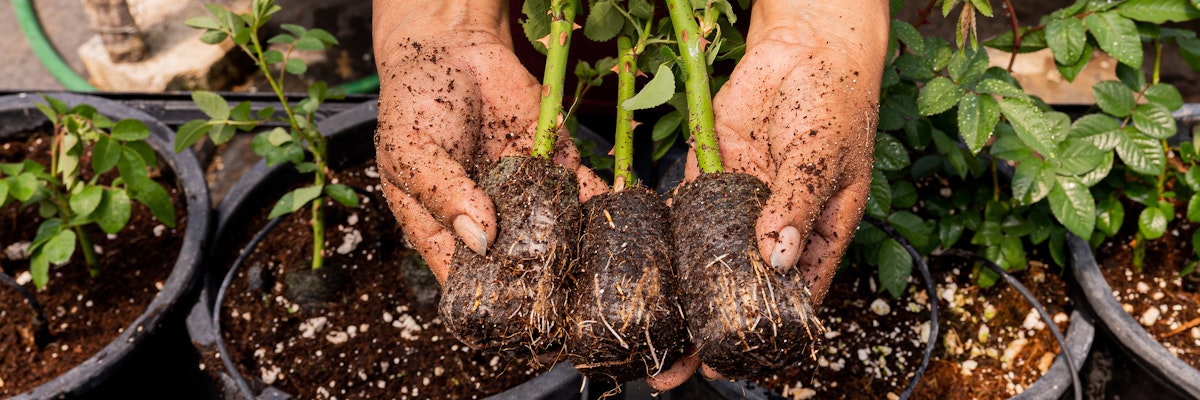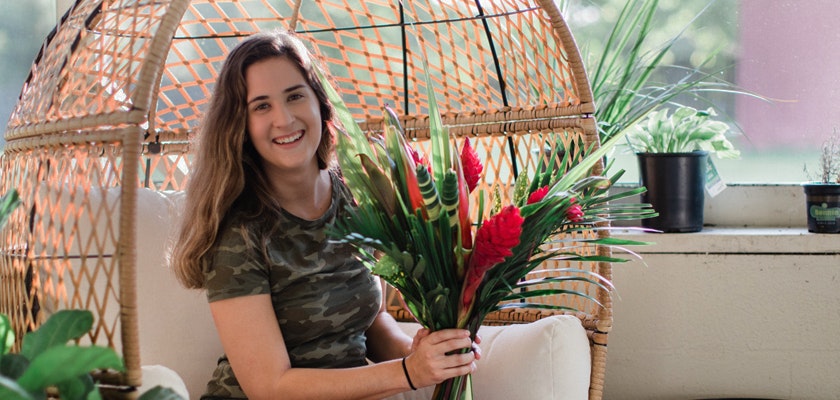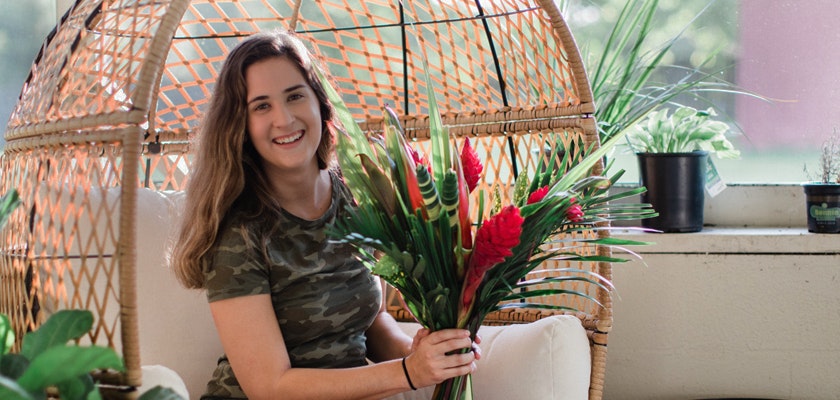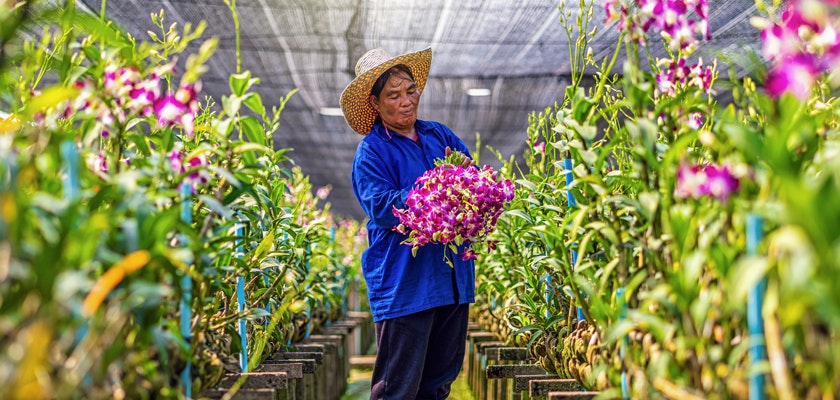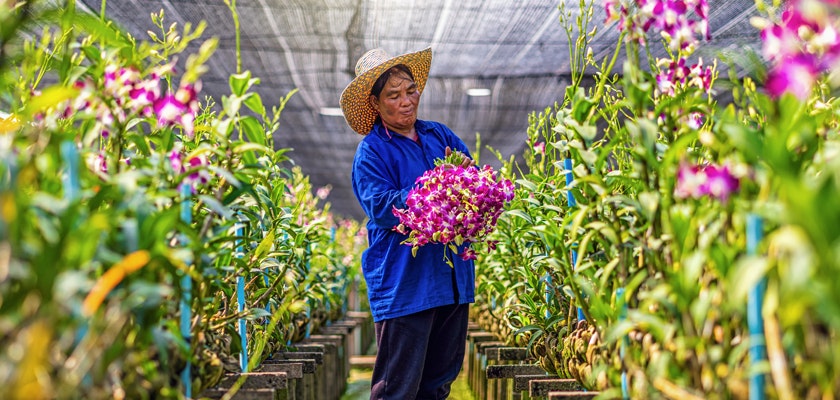Discover the Allure of Nature's Uninvited Guests: 9 Flowering Weeds That Beautify Your Garden
Nature has a way of painting landscapes with the broadest palette, often using the most unexpected canvases. Among these are flowering weeds, nature's resilient artists, that dot our gardens and wild spaces with bursts of color and life.
Exploring the hidden charm of this 9 astonishing flowering weeds
Often regarded as nuisances, flowering plants have stories, benefits, and beauty that are worth exploring. This blog dives into the world of flowering weeds, unveiling their hidden charm and how they can unexpectedly enrich our gardens.
In the realm of gardening and landscaping, weeds are typically seen as adversaries. These uninvited guests are often pulled, poisoned, and maligned in the quest for manicured lawns and pristine flower beds. However, a closer look reveals that many of these so-called pests are, in fact, beneficial to ecosystems, pollinators, and even the aesthetic appeal of our gardens. Among these are a variety of flowering weeds that offer more than meets the eye.
Exploring the hidden charm of this 9 astonishing flowering weeds
Often regarded as nuisances, flowering plants have stories, benefits, and beauty that are worth exploring. This blog dives into the world of flowering weeds, unveiling their hidden charm and how they can unexpectedly enrich our gardens.
In the realm of gardening and landscaping, weeds are typically seen as adversaries. These uninvited guests are often pulled, poisoned, and maligned in the quest for manicured lawns and pristine flower beds. However, a closer look reveals that many of these so-called pests are, in fact, beneficial to ecosystems, pollinators, and even the aesthetic appeal of our gardens. Among these are a variety of flowering weeds that offer more than meets the eye.
Flowering weeds come in an array of shapes, sizes, and colors. They are the hardy pioneers of the plant world, often being the first to colonize disturbed soils, offering protection against erosion and providing essential habitats for wildlife. Their blooms offer nectar and pollen to bees, butterflies, and other pollinators, playing a crucial role in local ecosystems. Beyond their ecological benefits, many flowering weeds possess medicinal properties and have been used in traditional remedies for centuries.
The resilience of flowering weeds is remarkable. They thrive in conditions where more delicate plants would falter, showcasing nature's adaptability. This tenacity, while often a challenge for gardeners, is also a testament to the weeds' evolutionary prowess. In recognizing their value and learning to coexist with them, we can appreciate the complexity and balance of natural ecosystems.
Understanding and appreciating the role of flowering weeds in our gardens and landscapes requires a shift in perspective. Instead of viewing them solely as nuisances to be eradicated, we can see them as an integral part of a diverse and healthy environment. By learning about the different types of flowering weeds, we can make informed decisions about which ones to manage and which ones to welcome for their beauty and benefits.
This blog post aims to shed light on 9 types of flowering weeds, exploring their unique characteristics, fun facts, and the unexpected ways they contribute to our gardens' vibrancy and vitality. Let's embark on this journey of discovery, looking beyond the label of 'weed' to uncover the beauty and utility of these resilient plants.
9 Types of Flowering Weeds: Nature's Unsung Beauties
1. Dandelion
The dandelion is a perennial, herbaceous plant with long, lance-shaped leaves. It's most recognized for its bright yellow flowers, which bloom almost year-round in some climates. Despite being considered a weed by many gardeners and lawn owners, the dandelion is a resilient plant that plays a crucial role in the ecosystem. It provides early spring nectar for pollinators and has numerous culinary and medicinal uses.
Ecology and Growth
Dandelions thrive in a variety of conditions but prefer sunny locations with fertile, well-drained soil. They are known for their deep taproot, which can make them difficult to eradicate once established. This taproot allows them to access nutrients and moisture deeper in the soil than many other plants can reach, giving them an advantage in less fertile conditions. Dandelions reproduce both through pollination, resulting in the familiar puffball of seeds carried away by the wind, and asexually, through root fragments.
Culinary and Medicinal Uses
Historically, dandelions have been used in traditional medicine to treat liver problems, kidney disease, swelling, skin problems, heartburn, and upset stomach. Almost all parts of the dandelion are edible. The leaves can be eaten raw in salads or cooked like spinach, the flowers can be used to make dandelion wine, and the roots can be dried, roasted, and ground into a coffee substitute. Rich in vitamins A, C, and K, as well as minerals like potassium, dandelions are a nutritious addition to any diet.
Fun and Interesting Facts
Every part of the dandelion is useful: root, flower, and leaves can be used for food, medicine, or dye.
The name "dandelion" comes from the French "dent de lion," meaning "lion's tooth," referring to the coarsely toothed leaves.
A dandelion can travel up to 5 miles before settling down to grow.
Despite being seen as a nuisance by many, dandelions are beneficial for gardens, attracting pollinating insects and breaking up compacted soil with their deep roots.
2. Clover
Clover, with its distinctive trefoil leaves, is often found in lawns and meadows. While some consider it a weed, others value its ability to fix nitrogen in the soil, improving fertility.
Ecology and Growth
Clovers prefer well-drained soil and full sun to partial shade. They spread through rhizomes and can quickly cover large areas, offering a green and lush appearance even in poor soil conditions.
Uses
Clover flowers are edible and can be used in salads or as garnish. They're also an important source of nectar for bees. Clover tea is known for its medicinal properties, including blood purification.
Fun Facts
Clover can be a sign of nitrogen-poor soil, as its presence improves soil health.
The "lucky" four-leaf clover is a rare variation of the common three-leaf clover.
Clovers are part of the legume family, related to peas and beans.
3. Chickweed
Chickweed is a cool-season annual plant often found in gardens and lawns. It has small, star-shaped white flowers and is highly resilient, capable of surviving in various environments.
Ecology and Growth
Thriving in moist, fertile soil, chickweed prefers shaded areas but can also grow in direct sunlight. It spreads rapidly, forming dense mats that can smother other plants.
Uses
Chickweed is edible and nutritious, rich in vitamins and minerals. It's used in salads, soups, and as a cooked green. Medicinally, it's applied topically for skin conditions.
Fun Facts
Chickweed's name comes from its popularity as a food source for chickens.
It has a unique method of seed dispersal, "shooting" seeds from the fruit when touched.
Chickweed can bloom and produce seeds all year round in mild climates.
Flowering weeds come in an array of shapes, sizes, and colors. They are the hardy pioneers of the plant world, often being the first to colonize disturbed soils, offering protection against erosion and providing essential habitats for wildlife. Their blooms offer nectar and pollen to bees, butterflies, and other pollinators, playing a crucial role in local ecosystems. Beyond their ecological benefits, many flowering weeds possess medicinal properties and have been used in traditional remedies for centuries.
The resilience of flowering weeds is remarkable. They thrive in conditions where more delicate plants would falter, showcasing nature's adaptability. This tenacity, while often a challenge for gardeners, is also a testament to the weeds' evolutionary prowess. In recognizing their value and learning to coexist with them, we can appreciate the complexity and balance of natural ecosystems.
Understanding and appreciating the role of flowering weeds in our gardens and landscapes requires a shift in perspective. Instead of viewing them solely as nuisances to be eradicated, we can see them as an integral part of a diverse and healthy environment. By learning about the different types of flowering weeds, we can make informed decisions about which ones to manage and which ones to welcome for their beauty and benefits.
This blog post aims to shed light on 9 types of flowering weeds, exploring their unique characteristics, fun facts, and the unexpected ways they contribute to our gardens' vibrancy and vitality. Let's embark on this journey of discovery, looking beyond the label of 'weed' to uncover the beauty and utility of these resilient plants.
9 Types of Flowering Weeds: Nature's Unsung Beauties
1. Dandelion
The dandelion is a perennial, herbaceous plant with long, lance-shaped leaves. It's most recognized for its bright yellow flowers, which bloom almost year-round in some climates. Despite being considered a weed by many gardeners and lawn owners, the dandelion is a resilient plant that plays a crucial role in the ecosystem. It provides early spring nectar for pollinators and has numerous culinary and medicinal uses.
Ecology and Growth
Dandelions thrive in a variety of conditions but prefer sunny locations with fertile, well-drained soil. They are known for their deep taproot, which can make them difficult to eradicate once established. This taproot allows them to access nutrients and moisture deeper in the soil than many other plants can reach, giving them an advantage in less fertile conditions. Dandelions reproduce both through pollination, resulting in the familiar puffball of seeds carried away by the wind, and asexually, through root fragments.
Culinary and Medicinal Uses
Historically, dandelions have been used in traditional medicine to treat liver problems, kidney disease, swelling, skin problems, heartburn, and upset stomach. Almost all parts of the dandelion are edible. The leaves can be eaten raw in salads or cooked like spinach, the flowers can be used to make dandelion wine, and the roots can be dried, roasted, and ground into a coffee substitute. Rich in vitamins A, C, and K, as well as minerals like potassium, dandelions are a nutritious addition to any diet.
Fun and Interesting Facts
Every part of the dandelion is useful: root, flower, and leaves can be used for food, medicine, or dye.
The name "dandelion" comes from the French "dent de lion," meaning "lion's tooth," referring to the coarsely toothed leaves.
A dandelion can travel up to 5 miles before settling down to grow.
Despite being seen as a nuisance by many, dandelions are beneficial for gardens, attracting pollinating insects and breaking up compacted soil with their deep roots.
2. Clover
Clover, with its distinctive trefoil leaves, is often found in lawns and meadows. While some consider it a weed, others value its ability to fix nitrogen in the soil, improving fertility.
Ecology and Growth
Clovers prefer well-drained soil and full sun to partial shade. They spread through rhizomes and can quickly cover large areas, offering a green and lush appearance even in poor soil conditions.
Uses
Clover flowers are edible and can be used in salads or as garnish. They're also an important source of nectar for bees. Clover tea is known for its medicinal properties, including blood purification.
Fun Facts
Clover can be a sign of nitrogen-poor soil, as its presence improves soil health.
The "lucky" four-leaf clover is a rare variation of the common three-leaf clover.
Clovers are part of the legume family, related to peas and beans.
3. Chickweed
Chickweed is a cool-season annual plant often found in gardens and lawns. It has small, star-shaped white flowers and is highly resilient, capable of surviving in various environments.
Ecology and Growth
Thriving in moist, fertile soil, chickweed prefers shaded areas but can also grow in direct sunlight. It spreads rapidly, forming dense mats that can smother other plants.
Uses
Chickweed is edible and nutritious, rich in vitamins and minerals. It's used in salads, soups, and as a cooked green. Medicinally, it's applied topically for skin conditions.
Fun Facts
Chickweed's name comes from its popularity as a food source for chickens.
It has a unique method of seed dispersal, "shooting" seeds from the fruit when touched.
Chickweed can bloom and produce seeds all year round in mild climates.
4. Plantain
Often mistaken for a grass, plantain is a hardy perennial weed with broad leaves and a dense spike of tiny flowers. It's ubiquitous in yards and sidewalks worldwide.
Ecology and Growth
Plantain prefers compacted soils and is often found in high-traffic areas. It's drought-resistant and can survive in both shade and full sun.
Uses
The leaves are edible raw or cooked and have a slightly bitter taste. Medicinally, plantain is used for its anti-inflammatory and wound healing properties.
Fun Facts
Plantain is sometimes called "nature's band-aid" because crushed leaves can be applied to wounds.
It's not related to the banana-like fruit also called plantain.
Native Americans called it "white man's footprint," as it seemed to follow European settlers everywhere.
5. Purslane
Purslane is a succulent weed with fleshy leaves and yellow flowers, often found in gardens and cracks in sidewalks. It's incredibly resilient and can thrive in poor, arid soils.
Ecology and Growth
Purslane spreads across the ground, forming thick mats. It prefers sunny locations and is drought-tolerant, thriving in hot, dry conditions.
Uses
Purslane is highly nutritious, rich in omega-3 fatty acids, and antioxidants. It can be eaten raw in salads or cooked like spinach. Medicinally, it's known for its skin-soothing properties.
Fun Facts
Purslane is one of the few plant sources of omega-3 fatty acids, usually found in fish.
It can live in soils that are mostly barren to other plants.
Ancient Egyptians used purslane to protect against evil spirits.
6. Nettle
Nettle is a perennial flowering plant known for its stinging hairs that deliver a sharp, burning sensation upon contact. Despite its defensive mechanism, nettle is highly regarded for its nutritional content and medicinal properties.
Ecology and Growth
Thriving in nitrogen-rich soils, nettle commonly grows in wooded areas, along streams, and in other undisturbed lands. It prefers moist, shaded environments but can adapt to a range of conditions.
Uses
Culinary: Young nettle leaves are edible when cooked, neutralizing the stinging chemicals. They're used in soups, teas, and even pesto.
Medicinal: Nettle is used to treat a variety of conditions, including allergies, arthritis, and eczema, thanks to its anti-inflammatory properties.
Fiber: Historically, nettle fibers were used to make durable textiles similar to linen.
Fun Facts
Nettle's sting has been used in traditional medicine to relieve arthritis pain through a process called urtication.
It is considered a "dynamic accumulator" in permaculture, as it pulls up nutrients from deep in the soil, benefiting surrounding plants.
7. Bindweed
Bindweed, often confused with morning glories due to their similar trumpet-shaped flowers, is a notorious perennial vine. It's known for its aggressive growth and resilience, making it a challenging weed to control in gardens and agricultural fields.
Ecology and Growth
Bindweed thrives in open, sunny environments and can be found in fields, borders, roadsides, and gardens. It has deep roots and extensive underground rhizomes, which contribute to its persistence and spread.
Uses
While primarily considered a pest due to its invasive nature, bindweed has limited uses:
Fun Facts
Bindweed can lower crop yields significantly by competing for resources and entangling plants.
Its seeds can remain viable in the soil for over 20 years, adding to the challenge of eradication.
8. Buttercup
Buttercups are known for their bright yellow, glossy flowers, which have graced meadows and grasslands. While beautiful, some species can be toxic to livestock and are considered weeds in pastures and gardens.
Ecology and Growth
Preferring moist conditions, buttercups are commonly found in damp meadows, lawns, and along waterways. They bloom in spring and early summer, spreading both by seed and through their root systems.
Uses
- Ornamental: Some species of buttercup are cultivated for their aesthetic appeal.
- Medicinal: Historically, buttercups have been used in folk medicine, though caution is advised due to their potential toxicity.
Fun Facts
The glossy appearance of buttercup flowers is due to a layer of reflective cells beneath the petal surface, creating a mirror-like effect.
There's a traditional children's game where a buttercup flower is held under the chin; a yellow reflection supposedly means you like butter.
9. Lamb's Quarters
Often mistaken for a mere nuisance in gardens and fields, lamb's quarters is a highly nutritious leafy green that has been consumed around the world for thousands of years.
Ecology and Growth
This hardy plant prefers nitrogen-rich soils and disturbed areas, making it a common sight in gardens, fields, and along roadsides. It can grow quite tall, reaching heights of up to 5 feet.
Uses
- Culinary: The young shoots and leaves of lamb's quarters are edible and can be used similarly to spinach, either raw or cooked.
- Medicinal: While not as widely used medicinally as some other plants, lamb's quarters have been employed in traditional medicine to treat various ailments, including digestive issues.
- Agricultural: It can act as a trap crop, attracting leaf miners away from more valuable crops.
Fun Facts
Lamb's quarters is incredibly rich in vitamins A and C, calcium, potassium, and iron.
The plant has a natural defense mechanism against pests - a powdery coating that deters insects.
4. Plantain
Often mistaken for a grass, plantain is a hardy perennial weed with broad leaves and a dense spike of tiny flowers. It's ubiquitous in yards and sidewalks worldwide.
Ecology and Growth
Plantain prefers compacted soils and is often found in high-traffic areas. It's drought-resistant and can survive in both shade and full sun.
Uses
The leaves are edible raw or cooked and have a slightly bitter taste. Medicinally, plantain is used for its anti-inflammatory and wound healing properties.
Fun Facts
Plantain is sometimes called "nature's band-aid" because crushed leaves can be applied to wounds.
It's not related to the banana-like fruit also called plantain.
Native Americans called it "white man's footprint," as it seemed to follow European settlers everywhere.
5. Purslane
Purslane is a succulent weed with fleshy leaves and yellow flowers, often found in gardens and cracks in sidewalks. It's incredibly resilient and can thrive in poor, arid soils.
Ecology and Growth
Purslane spreads across the ground, forming thick mats. It prefers sunny locations and is drought-tolerant, thriving in hot, dry conditions.
Uses
Purslane is highly nutritious, rich in omega-3 fatty acids, and antioxidants. It can be eaten raw in salads or cooked like spinach. Medicinally, it's known for its skin-soothing properties.
Fun Facts
Purslane is one of the few plant sources of omega-3 fatty acids, usually found in fish.
It can live in soils that are mostly barren to other plants.
Ancient Egyptians used purslane to protect against evil spirits.
6. Nettle
Nettle is a perennial flowering plant known for its stinging hairs that deliver a sharp, burning sensation upon contact. Despite its defensive mechanism, nettle is highly regarded for its nutritional content and medicinal properties.
Ecology and Growth
Thriving in nitrogen-rich soils, nettle commonly grows in wooded areas, along streams, and in other undisturbed lands. It prefers moist, shaded environments but can adapt to a range of conditions.
Uses
Culinary: Young nettle leaves are edible when cooked, neutralizing the stinging chemicals. They're used in soups, teas, and even pesto.
Medicinal: Nettle is used to treat a variety of conditions, including allergies, arthritis, and eczema, thanks to its anti-inflammatory properties.
Fiber: Historically, nettle fibers were used to make durable textiles similar to linen.
Fun Facts
Nettle's sting has been used in traditional medicine to relieve arthritis pain through a process called urtication.
It is considered a "dynamic accumulator" in permaculture, as it pulls up nutrients from deep in the soil, benefiting surrounding plants.
7. Bindweed
Bindweed, often confused with morning glories due to their similar trumpet-shaped flowers, is a notorious perennial vine. It's known for its aggressive growth and resilience, making it a challenging weed to control in gardens and agricultural fields.
Ecology and Growth
Bindweed thrives in open, sunny environments and can be found in fields, borders, roadsides, and gardens. It has deep roots and extensive underground rhizomes, which contribute to its persistence and spread.
Uses
While primarily considered a pest due to its invasive nature, bindweed has limited uses:
Fun Facts
Bindweed can lower crop yields significantly by competing for resources and entangling plants.
Its seeds can remain viable in the soil for over 20 years, adding to the challenge of eradication.
8. Buttercup
Buttercups are known for their bright yellow, glossy flowers, which have graced meadows and grasslands. While beautiful, some species can be toxic to livestock and are considered weeds in pastures and gardens.
Ecology and Growth
Preferring moist conditions, buttercups are commonly found in damp meadows, lawns, and along waterways. They bloom in spring and early summer, spreading both by seed and through their root systems.
Uses
- Ornamental: Some species of buttercup are cultivated for their aesthetic appeal.
- Medicinal: Historically, buttercups have been used in folk medicine, though caution is advised due to their potential toxicity.
Fun Facts
The glossy appearance of buttercup flowers is due to a layer of reflective cells beneath the petal surface, creating a mirror-like effect.
There's a traditional children's game where a buttercup flower is held under the chin; a yellow reflection supposedly means you like butter.
9. Lamb's Quarters
Often mistaken for a mere nuisance in gardens and fields, lamb's quarters is a highly nutritious leafy green that has been consumed around the world for thousands of years.
Ecology and Growth
This hardy plant prefers nitrogen-rich soils and disturbed areas, making it a common sight in gardens, fields, and along roadsides. It can grow quite tall, reaching heights of up to 5 feet.
Uses
- Culinary: The young shoots and leaves of lamb's quarters are edible and can be used similarly to spinach, either raw or cooked.
- Medicinal: While not as widely used medicinally as some other plants, lamb's quarters have been employed in traditional medicine to treat various ailments, including digestive issues.
- Agricultural: It can act as a trap crop, attracting leaf miners away from more valuable crops.
Fun Facts
Lamb's quarters is incredibly rich in vitamins A and C, calcium, potassium, and iron.
The plant has a natural defense mechanism against pests - a powdery coating that deters insects.
BloomsyBox: Embracing the Wild Beauty
As we explore the diversity and charm of flowering weeds, it's clear that there's beauty and value in the wild and untamed aspects of nature. BloomsyBox understands this well, embracing the essence of nature's spontaneity in their bouquets and plants. Their selection often includes flowers that echo the wild beauty of these flowering weeds, bringing a piece of the untamed outdoors into your home.
BloomsyBox Benefits
BloomsyBox offers an array of benefits that align with the appreciation of nature's full spectrum:
Sustainability: By sourcing flowers from Rainforest Alliance Certified farms, BloomsyBox ensures that you're supporting environmentally and socially responsible practices.
Freshness: The direct-from-farm model guarantees that the flowers arrive at your doorstep at their peak freshness, embodying the vibrant spirit of a garden in bloom.
Diversity: With a wide variety of flowers, including those that mirror the wild beauty of flowering weeds, BloomsyBox celebrates the diversity of the floral world.
Incorporating BloomsyBox bouquets into your home is a way to honor the beauty of nature in its many forms. Just as flowering weeds add unexpected splashes of color and life to our gardens, BloomsyBox bouquets bring the essence of the outdoors inside, reminding us of the beauty in the wild and seemingly untamed.
The world of flowering weeds is vast and varied, offering a glimpse into the resilience and adaptability of nature. These plants, often overlooked or dismissed, hold beauty, ecological value, and practical uses that deserve recognition. By learning to see the beauty in these natural wonders, we can foster a deeper appreciation for the complexity of our ecosystems.
BloomsyBox: Embracing the Wild Beauty
As we explore the diversity and charm of flowering weeds, it's clear that there's beauty and value in the wild and untamed aspects of nature. BloomsyBox understands this well, embracing the essence of nature's spontaneity in their bouquets and plants. Their selection often includes flowers that echo the wild beauty of these flowering weeds, bringing a piece of the untamed outdoors into your home.
BloomsyBox Benefits
BloomsyBox offers an array of benefits that align with the appreciation of nature's full spectrum:
Sustainability: By sourcing flowers from Rainforest Alliance Certified farms, BloomsyBox ensures that you're supporting environmentally and socially responsible practices.
Freshness: The direct-from-farm model guarantees that the flowers arrive at your doorstep at their peak freshness, embodying the vibrant spirit of a garden in bloom.
Diversity: With a wide variety of flowers, including those that mirror the wild beauty of flowering weeds, BloomsyBox celebrates the diversity of the floral world.
Incorporating BloomsyBox bouquets into your home is a way to honor the beauty of nature in its many forms. Just as flowering weeds add unexpected splashes of color and life to our gardens, BloomsyBox bouquets bring the essence of the outdoors inside, reminding us of the beauty in the wild and seemingly untamed.
The world of flowering weeds is vast and varied, offering a glimpse into the resilience and adaptability of nature. These plants, often overlooked or dismissed, hold beauty, ecological value, and practical uses that deserve recognition. By learning to see the beauty in these natural wonders, we can foster a deeper appreciation for the complexity of our ecosystems.
BloomsyBox's approach to fresh bouquet delivery and plant selection mirrors this appreciation, inviting us to embrace the wild, untamed beauty of nature in our own homes. As we cultivate a garden or decorate our spaces, let's remember the lessons flowering weeds teach us about resilience, diversity, and the unexpected beauty that lies in the natural world.
BloomsyBox's approach to fresh bouquet delivery and plant selection mirrors this appreciation, inviting us to embrace the wild, untamed beauty of nature in our own homes. As we cultivate a garden or decorate our spaces, let's remember the lessons flowering weeds teach us about resilience, diversity, and the unexpected beauty that lies in the natural world.
